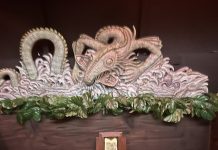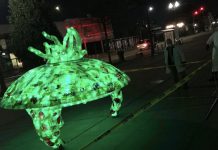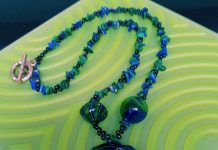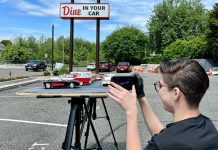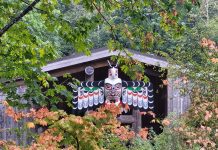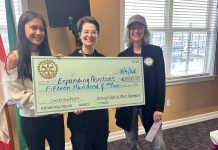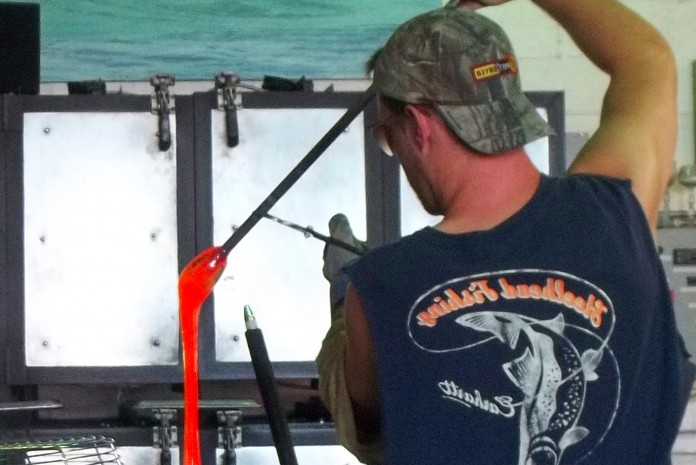By Jean Janes
![]() At the Tacoma Glassblowing Studio (TGS), the handcrafted glass is truly stunning, created with devotion and consideration for both the piece and its destination. The remarkable art is eclipsed only by the community impact of the studio. Through teaching, donation, and community outreach, owners Jeanine and Mark Sigafoos have not only contributed to the local art scene, but they have helped inspire a tenor of cooperation within the Tacoma community.
At the Tacoma Glassblowing Studio (TGS), the handcrafted glass is truly stunning, created with devotion and consideration for both the piece and its destination. The remarkable art is eclipsed only by the community impact of the studio. Through teaching, donation, and community outreach, owners Jeanine and Mark Sigafoos have not only contributed to the local art scene, but they have helped inspire a tenor of cooperation within the Tacoma community.
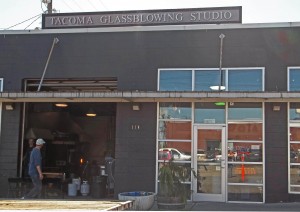
Debra Colson-Jackson is the gallery manager at the TGS and has been working for nearly five of the studio’s eight-year existence. Having joined the studio with no glassblowing experience, she has always loved glass, and has now had the opportunity to begin learning to work with glass. She reflects, “I get up every day so excited to come to work.”
The TGS is not only remarkable for the glass creations, but also because of the quality of the artists and owners. “Mark and Jeanine are phenomenal people,” Colson-Jackson explains. “They do it for the love of glass. They know it’s a business, and they know they have to treat it like a business, but first and foremost they do it because they love glass and they love sharing glass.” To that end, the TGS makes sure to keep the glasswork they feature in their gallery accessible to as many enthusiasts as possible. “We keep our prices down because the other philosophy [Jeanine and Mark Sigafoos] have is anybody should be able to afford glass,” she continues, “If you love it, you should be able to afford it.”
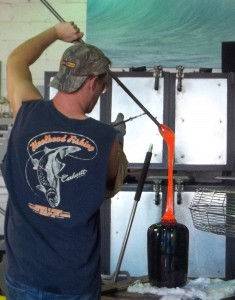
Currently, the main project at the TGS is the annual series of Northwest Glass Pumpkin Patches that the TGS contributes pieces to and sponsors. Beginning late August through the end of October, more than 2000 glass blown pumpkins will be displayed. Each Saturday, the hundreds of pumpkins of every shape, size, and color will be available for the public to enjoy and purchase. “We’ve really found that people love pumpkins,” Colson-Jackson muses. “It’s just one of those things, that when you think of fall and you think of Thanksgiving and Halloween, you always think of pumpkins.”
Brian Farmer, hot shop manager, artist, and instructor, begins work on a new pumpkin. It looks like little more than a glowing ball at the end of the blowpipe. As he continues to add volume and shape, he cradles the glowing glob as it spins on his palm with only thin material between his hand and the liquefied glass. William Carson assists as they work together on the pumpkin, turning and heating, then turning and reheating again.
Farmer applies paddles and scoops made of hard wood soaked in water to form and refine the shape. The wood sustains the figure of the spinning ball of molten color as it grows, and the smell of toasted fruitwood fills the air. Steam and smoke accompany flame and motion. Finally, they add a curlicue stem to the multifaceted shimmering pumpkin. The finished piece seems unrecognizable from the starting piece. With their newest masterpiece carefully tucked away to cool, Farmer and Carson begin work on the next pumpkin.
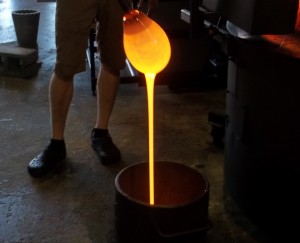
The Pumpkin Patches feature work from other local glassblowers, but also the work of the Hilltop Artists, a program created to provide art exposure and instruction for kids ages 12 to 20. A chance to display and sell their artwork, Colson-Jackson explains, “For the pumpkin patch, we have the Hilltop kids make pumpkins to contribute to the patch, and whatever there sells, Mark and Jeanine give back so they can have it for their program.”
The TGS also hosts about three visiting schools a year. Colson-Jackson describes, “We’ll work with them to make a bowl and then floats to go inside. So the kids are involved in it and then they take it to their auction and then they auction it off and the proceeds go to the school.” As the next generation falls in love with glasswork, the community flourishes and develops. Colson-Jackson sums up this sentiment, saying, “They’re giving us artists that are phenomenal, so of course we’re going to give back.”
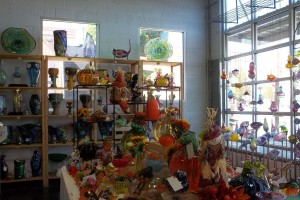
In the end, the TGS makes community responsibility a priority. From helping to enrich the artistic lives of kids to being a focal point for local artists to collaborate, the TGS works to be a positive force in Tacoma. Colson-Jackson asserts, “Number one is always, always customer service,” but not necessarily with return business in mind. Rather, the true focus is creating return artists and enthusiasts. “We want to make sure that no matter who walks in that door, no matter what their day is, it’s better when they walk out.”
Glassblowing itself is a collaborative art form. Normally, a gaffer, or the primary designer, will work with one or two assistants. The TGS offers several classes of varying lengths and experience by appointment, and Colson-Jackson explains that students are taught both the gaffer and assistant positions. Glassblowing is not a solitary art form, “It’s a team,” Colson-Jackson says. Clearly, it is also a community, and it is stronger and more beautiful thanks to the TGS.

















